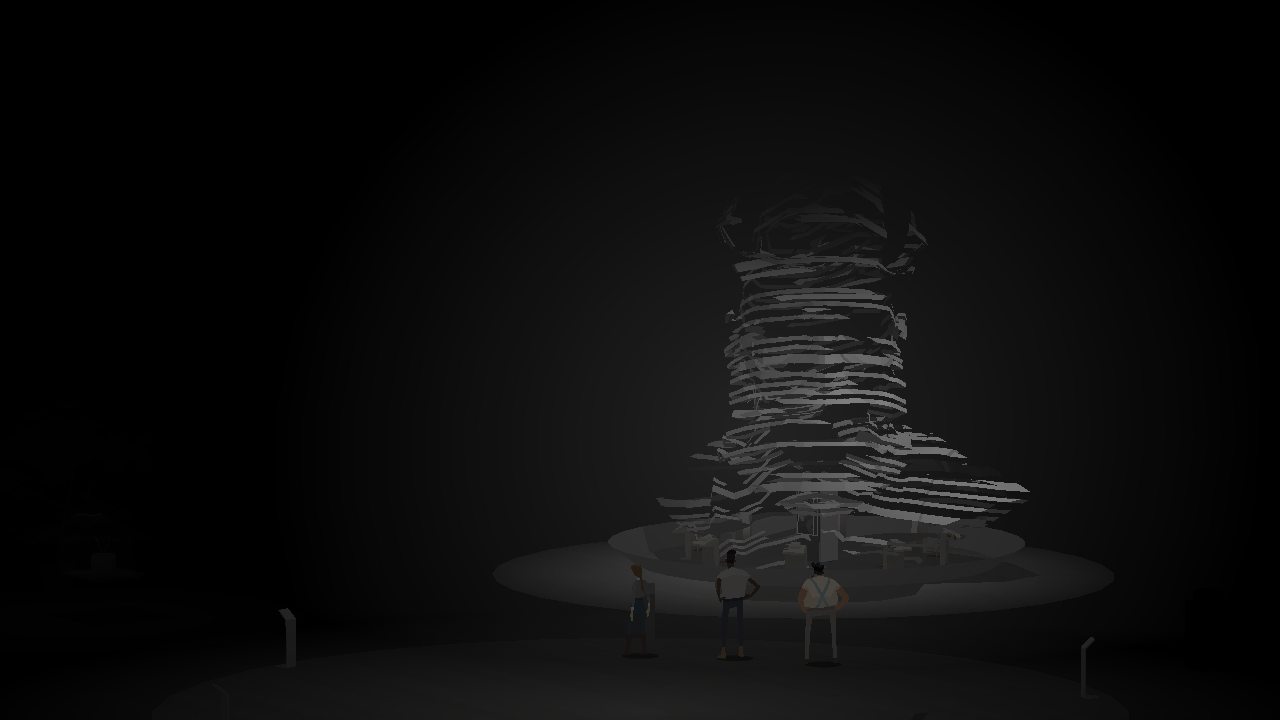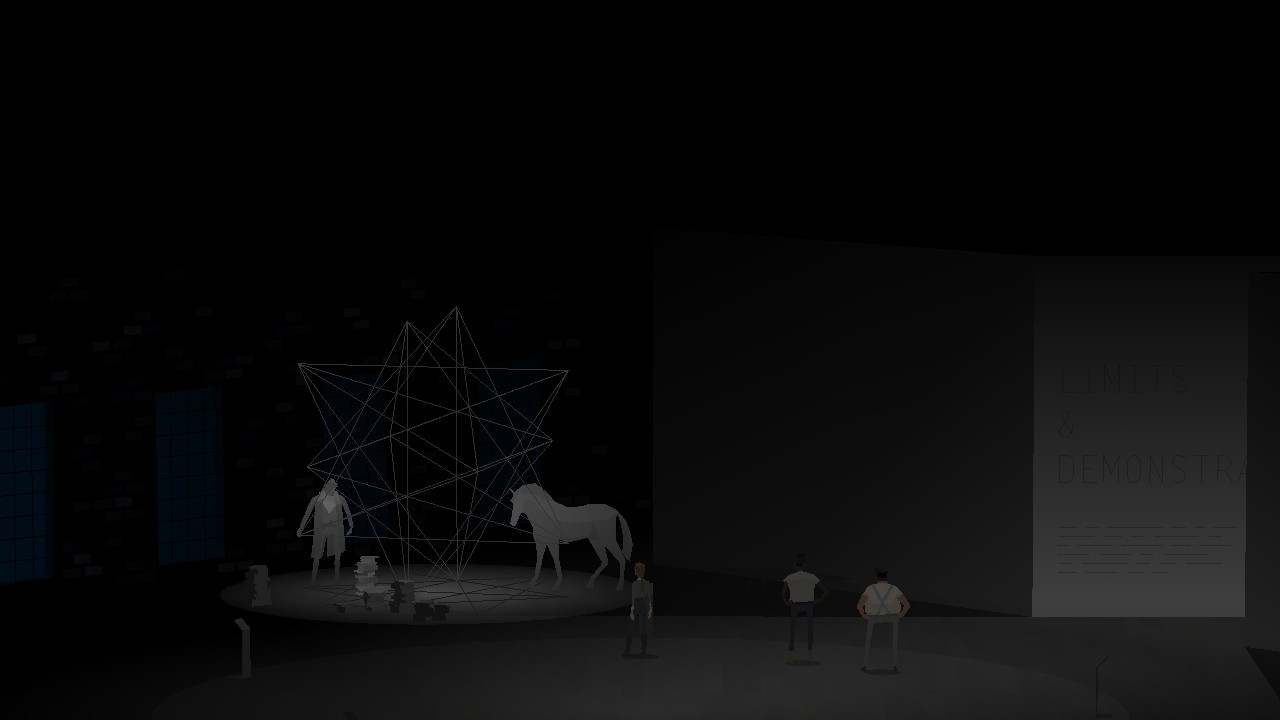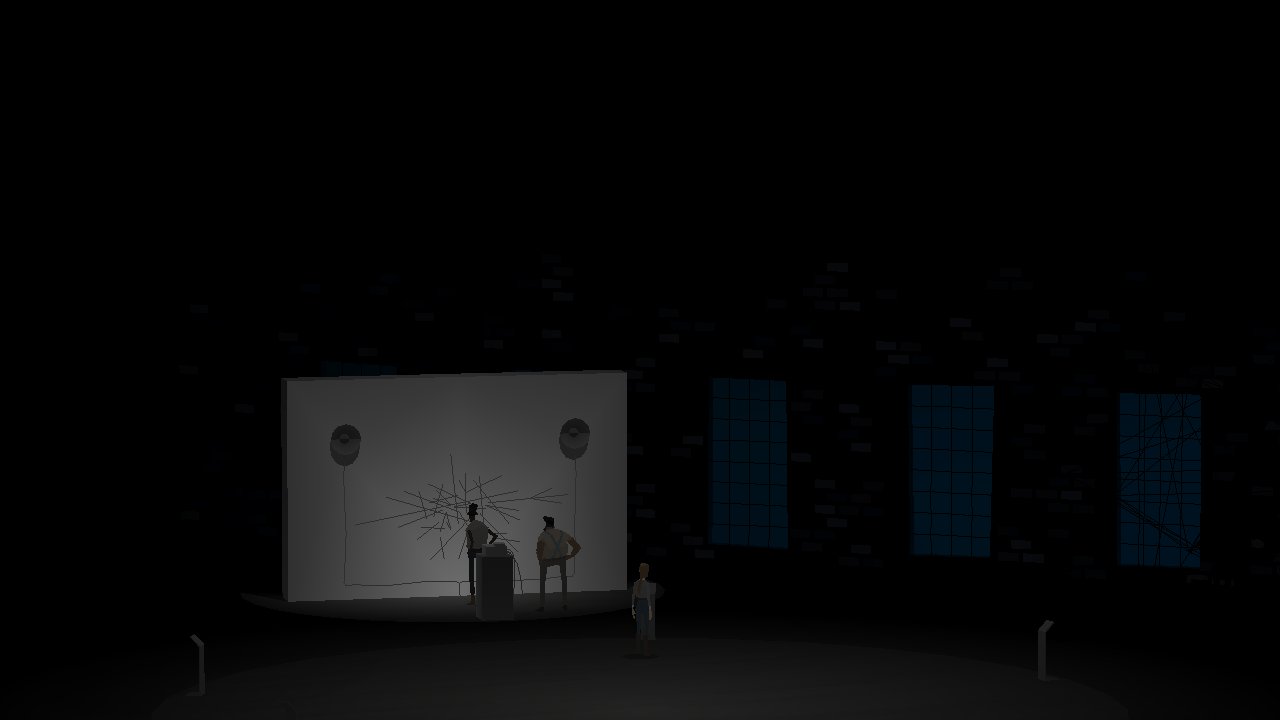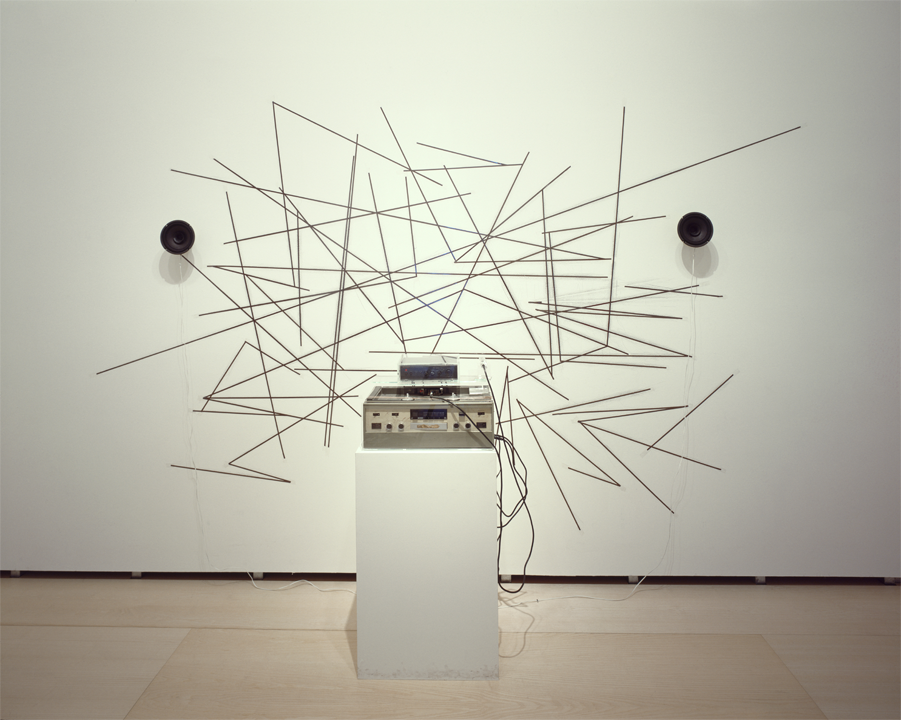Hi! This is the private monthly newsletter for Kentucky Route Zero. You're probably receiving this newsletter because you purchased the "complete" edition of Kentucky Route Zero directly from us. Thanks!
This newsletter started out as a reward for backers of our Kickstarter drive, way back in February 2011. It's proven to be really helpful for us as a way to organize our thoughts about the game and keep directly in touch with the people supporting us as we work on this long-term project. A lot of game developers use blogs to similar effect, but so far we prefer the intimacy and directedness of an email newsletter.
So thanks for joining us! During early development, this newsletter was sent out on a somewhat loose "monthly-ish" schedule. But from now until Act V is released, we're committing to a more regular schedule. You can expect a newsletter each month around this day.
Limits & Demonstrations
A few days ago, we released a short, free game called
Limits & Demonstrations
. It began as a sort of "demo," for people to find out whether their graphics card was capable of running KRZ. Over a few conversations, it grew and mutated (as our work always does) into more of a companion piece to the main story. We put it together over the course of a long weekend, and then quickly released it on our site. You can download "Limits & Demonstrations" here: http://kentuckyroutezero.com/limits-and-demonstrations/
If you'd like to check it out and haven't already, we recommend playing it before reading ahead where we deconstruct it a bit :)
So, in brainstorming weird/fun ways to approach a simple "graphics card test" demo, we hit on the idea of presenting various graphics card features that the game requires as a virtual art gallery. From there we started working out ways to fit it into the narrative and mythos of the game. We thought it could be a group exhibition of a few characters from the game, or maybe more of a natural history collection of found objects from along the
Zero
. Eventually we arrived at making this a solo exhibition by Lula Chamberlain, a character who we hadn't yet formally introduced in the game (she is referenced very briefly in Act I).
Let's talk about a few pieces in the exhibition!

This piece,
Visage
, was inspired by a poem in the 1983 book
The Policeman's Beard is Half-Constructed
.
Policeman's Beard
was presented as having been authored by a computer program called Racter, which generates poems, stories, and conversations. Of course, this claim has been a subject of controversy, since Racter relies heavily on templated texts and prescribed relationships between ideas, making the book perhaps more like a collection of algorithmic writing attributable to Racter's programmer (William Chamberlain). This kind of electronic writing is important history for us. Anyway, here's the poem:
Slice a visage to build
A visage. A puzzle to its owner.
The book itself is wonderfully illustrated by Joan Hall.
UbuWeb.com hosts a scanned PDF
, if you'd like to read more.

This piece,
Basement Puzzle #2 (artist, sunset, and horse)
, is kind of a joke about a puzzle we removed from episode one before release. Here's a video of the original puzzle:
As you can probably work out, this was replaced by Conway's (non-)interaction with Ben, Emily & Bob in the basement. This older version of the puzzle was a part of the game for several months, and while we felt attached to its muted strangeness, it was just too inscrutable to leave in (especially so early in the game). Too many play-testers just gave up here, five minutes into the game. This experience actually kind of warned us off puzzle-making in general. Puzzles hadn't been at the center of KRZ for a while, but we were still sometimes awkwardly trying to insert them.

This piece is called
Overdubbed Nam June Paik installation, in the style of Edward Packer
. The Nam June Paik installation referenced in the piece's title is his
Random Access
from 1963, which looked like this (this image is actually a 2000 installation of the piece):

As Ben explains in-game, the wall is covered in strips of magnetic audio tape, and the viewer runs a playback head over the tape to listen to what's recorded on it. Our idea here was that Lula somehow acquired or was given the piece, and then recorded over Paik's original audio (also a bit of an oblique art reference, to Rauschenberg's
Erased De Koonig Drawing
).
We included this piece as a way to demo the text-and-audio-only parts of the game (and to set up some story stuff with the characters involved in the recordings). Since the recordings are primarily made up of two voices (Lula's and a computer's), we experimented with including actual voice recordings in the sound design. We ended up finding them too distracting and cutting them completely, but here are some samples:
Lula's speech audio.
Computer speech audio.
Just for fun,
here's a flowchart of the dialog in the piece
. We have a tool that generates these flowcharts for us, which we use to catch dead-ends in conversations and other errors.
Other news
Here are some other things we've been working on (aside from Act II!):
-
We've moved purchasing and distribution to the Humble Store platform, which is working great. Currently working on migrating orders over from our old system so all your orders will be managed through Humble Store.
-
We're working with Valve on a Steam release right now, and you'll get a Steam code in your order page as soon as that's up and running.
-
We've been reworking the design & behavior of the text-and-sound-only overworld vignettes a bit. You can see a sketch of this new behavior in "Limits & Demonstrations" in the "Overdubbed Nam June Paik Installation..." piece.
-
The game should also be on Amazon.com any day now!
Thanks!
Jake+Tamas